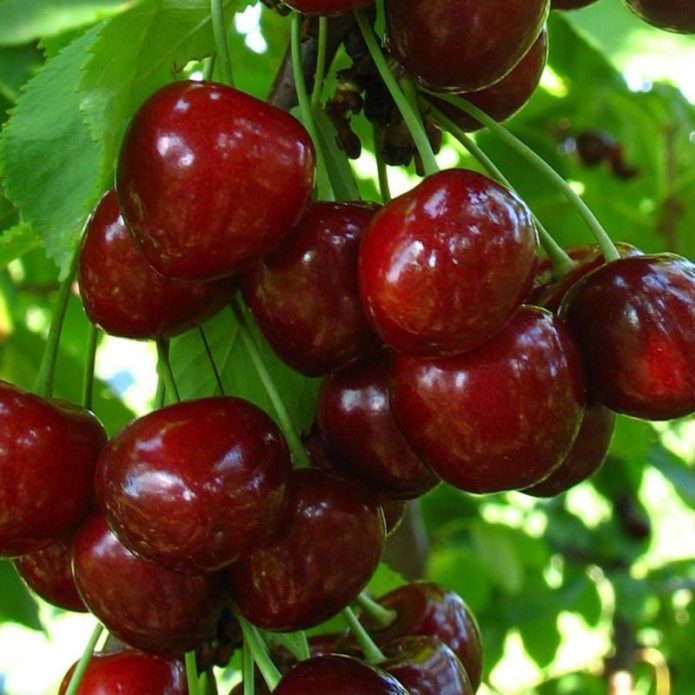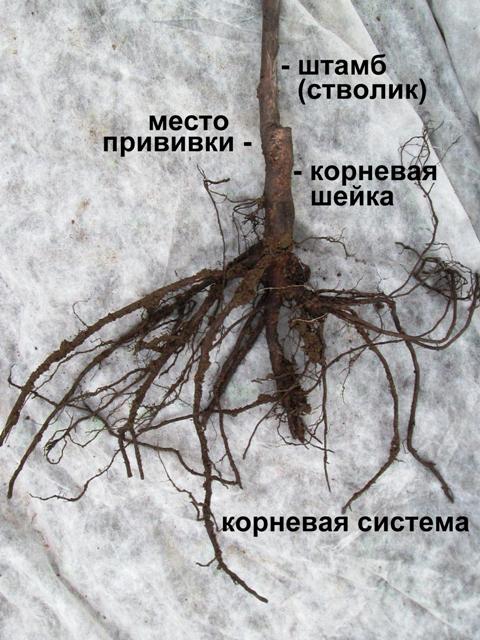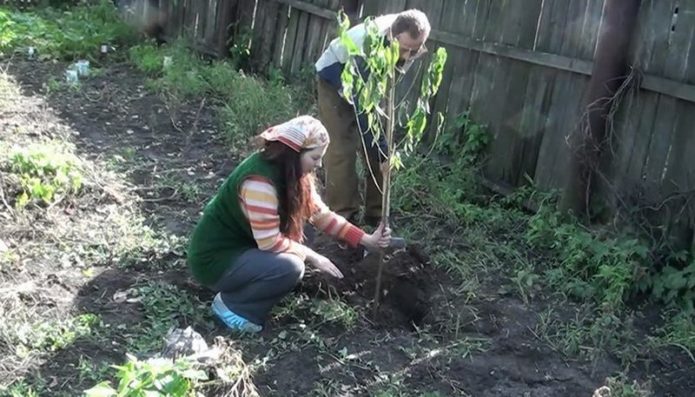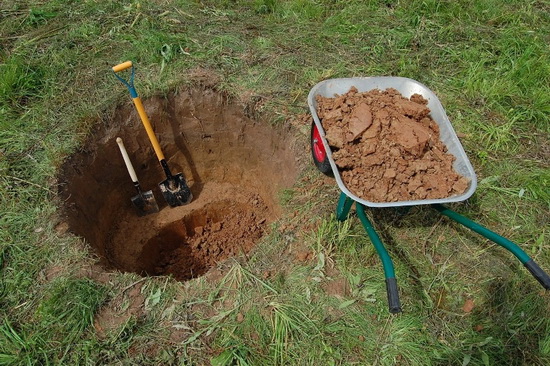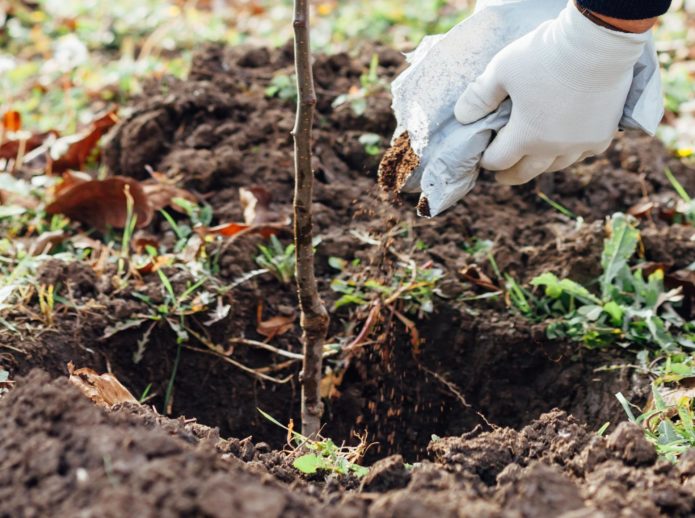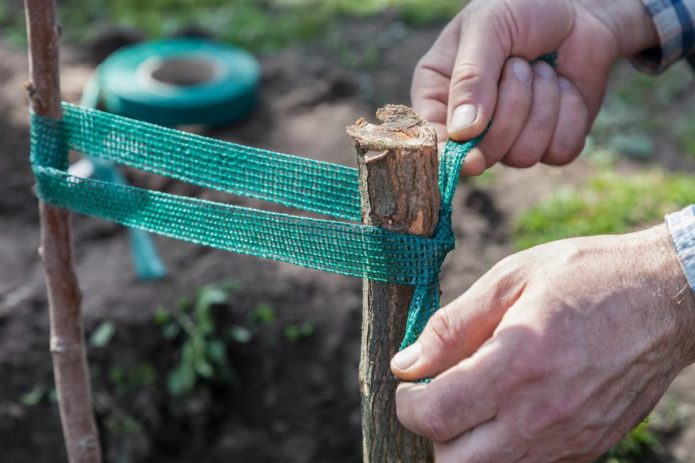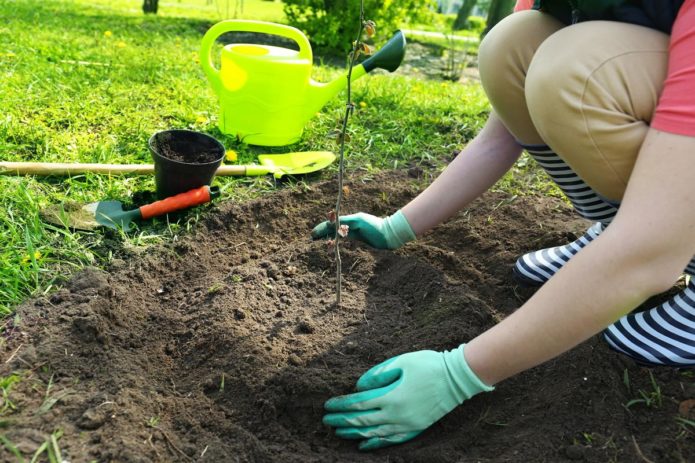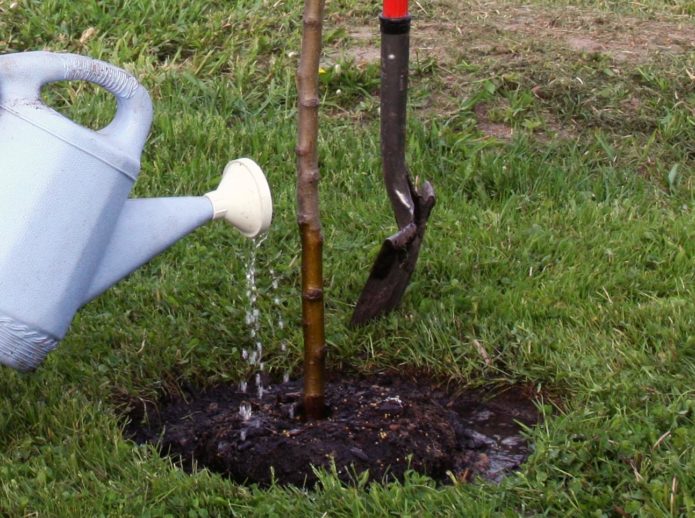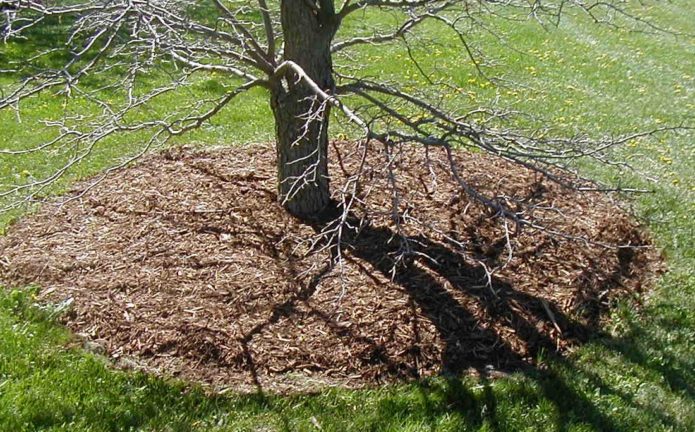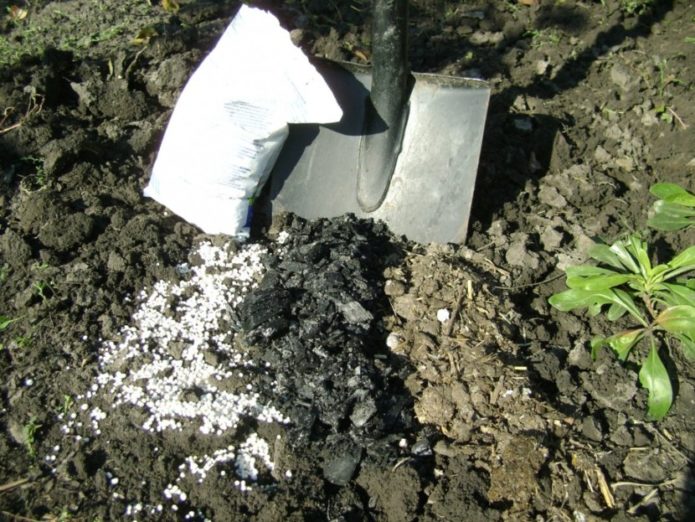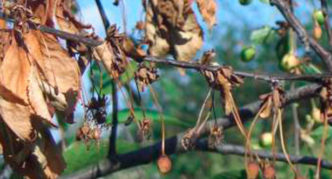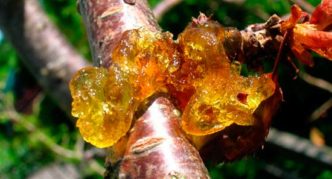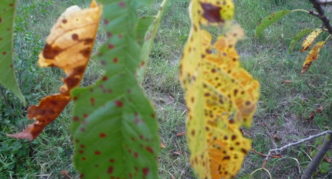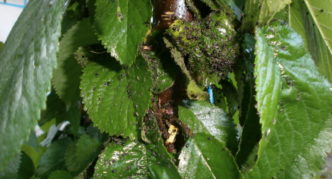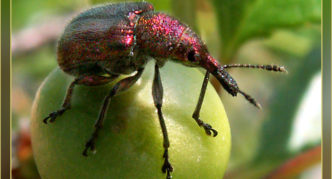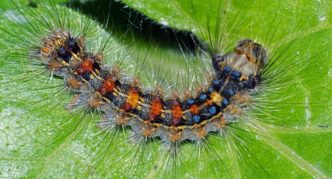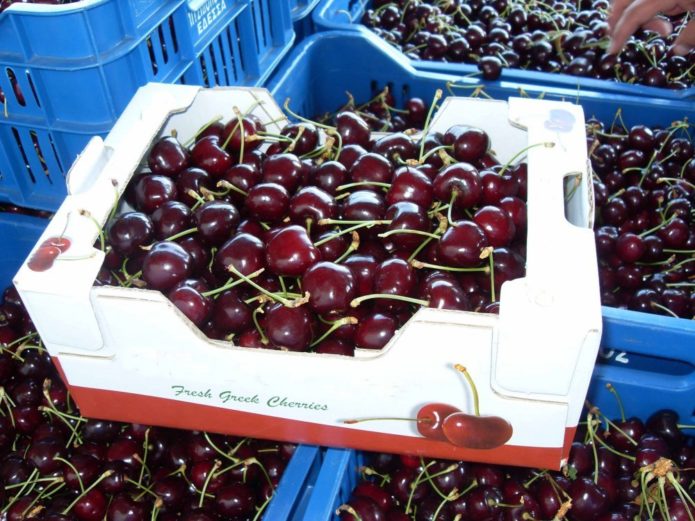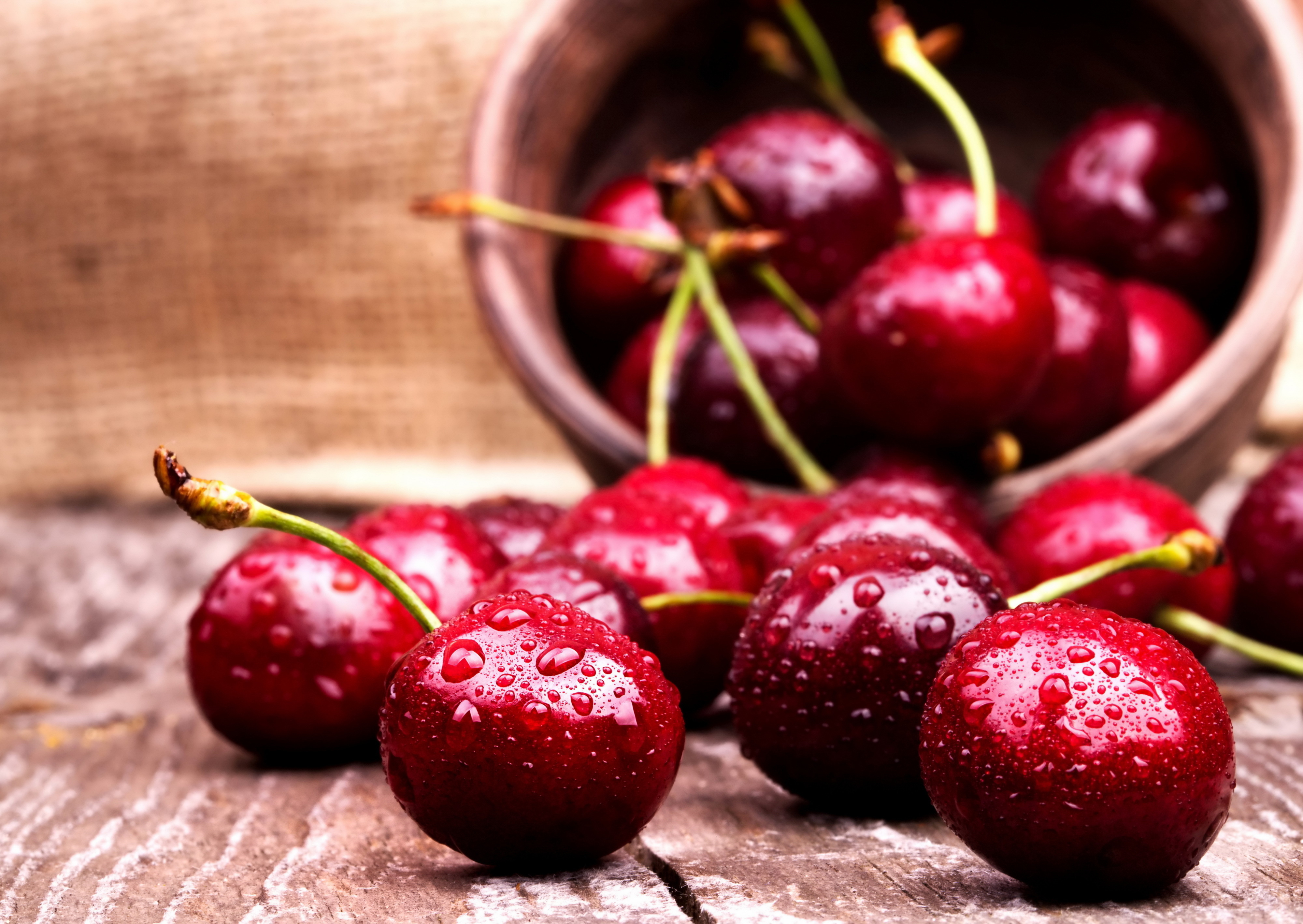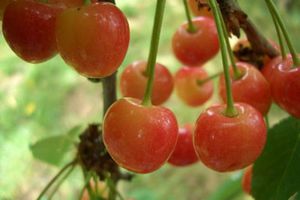Curious gardeners strive to grow on their plots not only domestic types of cherries. For example, the German cultivar Regina is popular throughout Europe. In our gardens, this cherry also shows good results. It is distinguished by frost resistance and excellent fruit quality.
Content
History and description of the Regina cherry variety
The result of the work of German breeders is the Regina cherry variety. It is appreciated not only in Europe, but also in Russia, and in some countries of the post-Soviet space, as it is perfect for industrial and farm cultivation.
Cherry Regina - the result of crossing the varieties Rube and Schneider late.
Regina is adorned with a beautiful, not too thickened crown of a wide-round shape. The vigor of sweet cherries ranges from strong to medium. The tree has a well-defined conductor and a wide branching angle of shoots from the trunk.
The variety blooms at a later date. The flowers are white, not too large. Inflorescences, similar to tassels, consist of 2-3 flowers.
The fruits of the Regina cherry are quite impressive in size. Average weight 8.5 g. But the tree is quite capable of showing the larger sizes of the fruits - up to 10 or 11 g. The berry is very beautiful outwardly. Heart-shaped, sometimes slightly elongated. The skin is shiny, dark red. The pulp has a slightly lighter shade. In consistency, it is dense, slightly crunchy and very juicy. The taste is sweet, with a slight sourness. The tasting score is almost 5 points.
Characteristics of the variety:
- Quite good early maturity - cherries begin to bear fruit 3 years after planting.
- A very late ripening variety. The harvest usually begins in mid-July, but the dates may shift depending on the weather. You can again enjoy the wonderful taste of summer when other varieties have already fruited.
- With regard to yield, one can safely note the constancy of fruiting. One adult tree bears up to 40 kg of fruit.
- The self-infertility of the variety will not cause problems if suitable pollinators are planted nearby.
- Regina is appreciated for its good frost resistance. Cherry can withstand frosts down to -25 ° C.
- The tree has excellent immunity - it is practically not worried about common fungal diseases.
Video: Regina's cherry crop is ripening
Table: advantages and disadvantages of the variety
| Advantages | disadvantages |
| The fruits are delicious, externally attractive | Needs pollinators |
| Berries have dry separation, withstand long-term transportation and storage | |
| Ripe fruits do not crumble for a long time | |
| Frost-resistant tree | |
| Resistance to fungal diseases high |
Landing features
In order for the seedling to quickly take root and reveal its capabilities in due time, you need to perform the correct planting. This process consists of several sequential steps.
Sapling selection
Choose seedlings that are zoned according to your place of residence. In order not to be mistaken when choosing a variety, contact only specialized nurseries or centers. If there are no such in your city, ask your friends about a trusted seller. It is best to purchase a seedling in the fall - a large selection and reasonable prices.
When choosing, pay attention to the following details:
- The root system should be well developed and consist of 3-4 branches covered with a fine mesh of suction processes. The root should be white when cut. Also test it for elasticity by rolling a ring around your finger. With a well-moistened root, this can be done without difficulty. If you find signs of disease (swelling, growths, rotten areas), it is better to look for another seedling.
- The trunk should be flat with elastic bark. Wrinkles or damage indicate poor quality planting material.
- It is advisable to choose one- or two-year-old seedlings with a height of 1 m or more, with 3-5 branches at least 35 cm long. Pay attention to the buds: they should not be damaged.
- Make sure you have the vaccine.
Planting timing
This is an important question, since a tree planted at the wrong time may not take root at all. Usually, experienced gardeners prefer autumn planting. Although Regina can be planted in early spring. Each of the seasons has its own advantages and disadvantages.
- Autumn planting. Recommended for regions with hot or mild climates. A wet and warm autumn will help the seedling in a new place to adapt in a short time and build up the root mass before the onset of frost. But for this, the tree must have about a month in stock. Therefore, it is important to plant in late September or early October, given the climatic conditions. For example, in Crimea, planting is quite appropriate even in late October and early November.
- Benefits. A wide selection of seedlings, and it is very important to purchase healthy planting material. Autumn planting will not cause much care. The tree is watered abundantly after planting, and the rest of the moisture will occur naturally, due to precipitation. A successfully overwintered seedling will start to grow a couple of weeks earlier than planted in spring, and it will endure the summer heat calmly.
- Disadvantages. If you plant a tree later than the due date, it may die. In addition, dry autumn or sudden drops in winter temperatures should be considered. Cold winds or icing on branches can be stressful. There is also a high likelihood of damage by rodents.
- Spring landing. It is mainly carried out in regions with low winter temperatures and winters with little snow. During the growing season, the seedling will take root completely and freezing temperatures will not pose any threat to it.
- Benefits. The preparatory work carried out in advance will allow the planting process to pass more efficiently. The gardener will have the opportunity to observe all stages of the adaptation of the seedling. A rooted plant can survive all winter troubles.
- Disadvantages. It is best to buy planting material in the fall, so you need to take care of the safety of the seedling until spring. Summer heat presupposes frequent watering, therefore, the gardener will have more trouble.
During planting, the seedling must be dormant.
Site selection
A sweet cherry planted in a sunny location has a sweeter berry and ripens a little earlier than in the shade. It is important that the tree is protected from winter winds by a building, fence or greenery. And in the summer, a strong draft will not allow pollinating insects to do their job, and for Regina this is extremely important. But do not try to find a completely calm place. Slight blowing of the crown is useful for the prevention of fungal diseases.
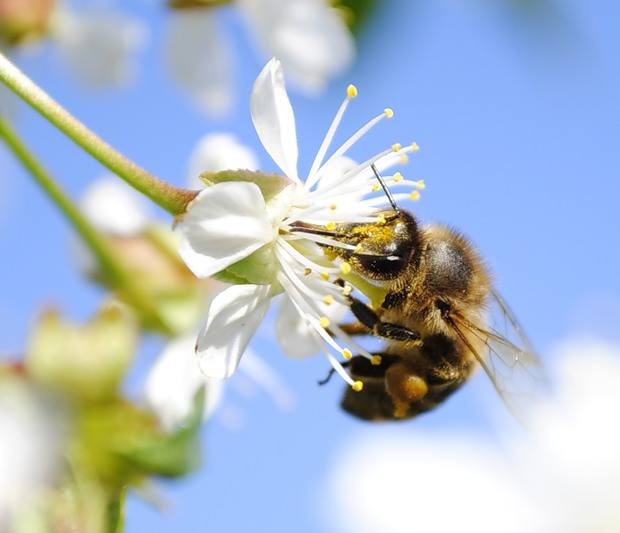
For Regina, the presence of pollinating insects is important, and they will work only in suitable conditions
It is extremely important to know the properties of the soil in your area in order to correctly determine the place on which the sweet cherry will grow. For the successful development of the seedling and subsequent fruiting, Regina needs fertile, light and well-drained soils. Light loam and loose sandstone meet these requirements in the best possible way.
When choosing a permanent place for cherries, you need to consider the following features:
- Do not plant heat-loving cherries in lowlands or pits. Cold air masses accumulate there, which harms the tree during flowering and pollination.
- The root system of sweet cherries is extremely sensitive to stagnant water, so wetlands or areas with a high groundwater table are also not suitable.
- In areas with heavy clay soil, you will have to work a lot, giving it the necessary structure by adding a lot of sand.
- Sweet cherries will suffer on acidic soils. Therefore, it is necessary in advance to carry out liming in the selected area, bringing the acidity level to neutral indicators.
Planting pit preparation
In order for the cherry root system to develop quickly enough, the soil in the planting pit must be nutritious and have the necessary structure. Therefore, you need to start preparing it in advance. For spring planting, the pit is prepared in autumn, for autumn planting - no later than a month before the procedure.
- Free the site chosen for planting cherries from stones, remnants of ground vegetation, dig up the roots of perennial weeds.
- On the surface of the soil, draw the outlines of the future deepening and dig a hole of the following dimensions:
- circumference - 1m;
- depth - 70 cm.
- Drive a stake more than a meter high into the solid bottom so that it rises 50 cm above the soil surface.
- Set aside the top soil to one side, and raised from the depth can be evenly scattered among the plantings. Add organic matter and mineral fertilizers to the deposited soil. For this you will need:
- 2-3 buckets of rotted manure;
- 100 g of potash fertilizers;
- 200 g of phosphorus;
- 1 liter of wood ash.
- Mix the mixture thoroughly and fill the pit with it.
- Pour a bucket of water into the hole, this will help the earth settle and the nutrients dissolve evenly in it.

For planting, a nutritious soil mixture should be prepared, consisting of an upper layer of fertile soil, organic and mineral fertilizers
Landing
The planting process consists of the following sequential steps:
- Examine the root system carefully. If the roots are a little dry, dipping them in a bucket of water for several hours will help revive them.
- At this time, dig some of the soil from the planting pit. Collect the rest with a cone around the hammered stake.
- Place the cherries in the center at the top of the cone, spreading the roots along its sides.
- Holding the seedling by the trunk, shovel the removed soil mixture back into the hole. To distribute the soil more evenly in the roots, shake the tree by the trunk.
- Lightly compact the soil around the seedling, tie it to a support.
- After completing the irrigation space, pour 2–3 buckets of water into it, depending on the dryness of the soil.
- After the water is completely absorbed, assess the planting level.The root collar should rise 3 to 6 cm above the soil level. If the plant is planted too high, top up the soil to the desired level.
- At the end of planting, cover the trunk circle to avoid moisture loss.
It is convenient to plant a seedling together. One person holds the tree by the trunk, making sure that it stands exactly in the center of the hole. The other is backfilling the roots.
Pollinators for cherries Regina
The Regina variety needs pollinators. Thanks to them, more quality fruits will be tied on the cherry. If your garden is modest in size, ask your neighbors, maybe suitable trees grow just on their site. Or, in the crown of your cherry, you can graft a twig of a variety, the flowering of which occurs at the same time.
The following varieties will cope best with pollination:
- Schneider late,
- Sam,
- Donetsk beauty,
- Silvia,
- Gedelfinskaya,
- Wanda,
- Lapins.
Care secrets
In order for a seedling to develop correctly, it needs to be properly cared for.
Watering
In order for Regina to be able to bear fruit with large and juicy berries, it must be properly watered. Up to 60 liters of water must be poured under an adult tree so that the moisture properly nourishes the root system. During the season, the tree must be watered at least three times:
- At the beginning of the growing season, when the buds wake up.
- 15 days after flowering.
- 2-3 weeks before the fruit is fully ripe.
The frequency of humidification should be corrected by natural precipitation: in a rainy summer, the number of irrigations should be reduced, in hot and dry summers, increased. Saplings need their own watering schedule. The first 2-3 years after planting, the tree is very vulnerable, so 2 watering a month will help the cherry to gain strength. For a young plant, 30 liters of water poured into a watering circle will be enough.
If the fall is dry, water the cherries abundantly at the end of the season. Moistened roots will transfer part of the moisture to the wood, and in the winter cold the cherries will not suffer from the drying cold winds.
After watering or rain, the soil in the trunk circle must be loosened. This restores the process of gas exchange in the roots, destroys weeds and reduces moisture loss. Mulch is also an excellent means of keeping moisture. For this purpose, you can use dried grass, hay, dry leaves (but only collected under a healthy tree).
Top dressing
The Regina variety prefers fertilized soils. And since sweet cherry is a rather big tree, and besides, it bears fruit regularly, it must be provided with food annually. But you need to start feeding no earlier than the 3rd year after planting, if all minerals have been introduced into the planting pit.
The ideal option for cherries is the alternation of organic and mineral fertilizers. On fertile soils, manure or compost is applied every year, on poor soils - annually. The norm is up to 40 kg for an adult tree. Trees are fertilized with organic matter in late autumn. You can add the most useful and accessible substance to it - wood ash in the amount of 1 liter.
Of the mineral supplements, Regina prefers potassium sulfate, superphosphate and nitrogen. Nitrogen is applied only in spring or until mid-summer. In autumn, nitrogen-containing fertilizers can cause the growth of shoots that will go away during the dormant period with unripe wood, and this can lead to their freezing in the winter. Up to 150 g of urea can be added under one tree. Before watering, top dressing is scattered around the perimeter of the crown and embedded to a depth of 10 cm.
The autumn set of fertilizers consists of 100 g of potassium sulfate and 200 g of superphosphate. Top dressing is also scattered in the trunk circle, after which digging and watering are carried out. Thanks to these substances, cherries will endure unpredictable winter weather much easier.
Potash fertilizers cannot be used at the same time as urea.
The most essential nutrient for seedlings is nitrogen. The substance is applied in spring and early summer in the amount of 20 g per 1 m2... You can make a solution and apply it after watering, or, scattering it in the near-trunk circle, lightly embed it in the soil.
Pruning
The Regina variety lends itself very well to formation. The tree planted in spring is subjected to the procedure after planting. If the tree is planted in autumn, then you need to wait until next spring.
Basically, when pruning a sweet cherry, it is given a sparse-tiered shape of 5-10 branches. The whole process takes up to 3-4 years. For a one-year-old seedling, the formation increases by a year, since a tree that has no branching is spurred with the help of crowning, and the next year they begin to lay tiers.
Basic rules for the formation of the Regina cherry crown:
- We form a low headquarters - 50-60 cm. For this, at a given height, remove all branches and shoots. We cut it strictly to the ring.
- Taking into account the light-requiring sweet cherry, we maintain a distance of 50-60 cm between the tiers.
- We leave no more than 3 branches in one tier.
- Sweet cherry is a tall tree, therefore growth should be limited to a height of 4 m. To do this, at the end of the formation process, we transfer the central conductor to a single lateral branch.
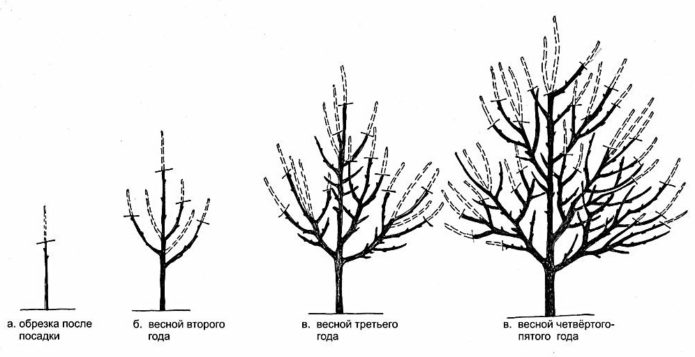
The formation of a sparse-tiered crown is completed in 4–5 years, cutting off the central conductor above the last skeletal branch at a height of 4 m from the ground
A tree that has entered fruiting is subjected to thinning pruning. It allows you to reduce the load, which has a positive effect on the quality of the fruit. In addition, a sparse crown is better blown by the breeze, and this reduces the likelihood of disease.
Older trees that have stunted are pruned to rejuvenate. Pruning is carried out on five- or eight-year-old wood with a transfer to lateral strong branches.
Video: spring pruning of cherries
https://youtube.com/watch?v=PdUhNCQPuVs
Autumn work and preparation for winter
End-of-season work is very important: they help the tree enter a dormant period and survive the winter. In the preparatory period starting in September, you need to do the following:
- Remove any fallen leaves and old mulch from the tree trunks.
- Apply the necessary top dressing.
- Cut off damaged or diseased branches, process the cuts with garden pitch.
- Examine the trunks carefully. Remove the old peeled bark. Clean up cracks or wounds, treat with copper sulphate and cover with garden pitch.
- Whitewash the stems.
- Water pre-winter if required.
Adult Regina cherries perfectly tolerate winter low temperatures, but it is worth worrying about the root zone. Cover this space with mulch with a layer of 20 cm. The trunk is no longer threatened by frost, but by rodents. You can save the stem from them by wrapping it with a fine-mesh net.
A completely different care is required for seedlings. Fragile wood needs protection from frost, so the bole and tiered branches need to be insulated. Use only materials that are easily breathable. If you wrap the trunk with plastic wrap, the bark will begin to flake underneath. Cover the roots with mulch. After the snow falls, in order to additionally insulate the root zone, you can collect a snowdrift around the trunk.
Typical diseases and pests
Regina is famous for its high resistance to fungal diseases, but can suffer from viral infections.
Table: diseases and pests of sweet cherry, prevention and control measures
| Diseases and pests | Symptoms | Prevention | Control measures |
| Moniliosis | Infection through the pistils of the flower gets inside, quickly spreading throughout the tree. The onset of the disease can be seen by wilting inflorescences and ovaries. Further, the disease leads to drying out of branches, falling leaves, rotting of fruits. |
|
|
| Hommosis (gum flow) | Trees that have mechanical damage or frost damage are affected. A sticky substance emerges from the wounds, which, when hardened, becomes like a vitreous growth. If the gommosis is not treated, then it can provoke drying out of the branches. |
| Use a sharp knife to scrape off the cured resin to a healthy tissue. Treat the wound with 1% copper sulfate, and then cover with garden varnish. |
| Sweet cherry mosaic disease | Circles or stripes appear on the leaves, the color of which has changed. The sheet plate deforms and falls off. Due to impaired photosynthesis, cherries weaken. If the disease is started, then it blocks sap flow in the trunk. |
| Unfortunately, there are no cures. Uproot the diseased plant and burn it. |
| Unpaired silkworm | The butterfly lays eggs on thick skeletal branches. The caterpillars that have developed from them actively eat the leaves. In a neglected version, the tree may dry out. |
| Use Actellic or Inta-Vir in early spring and when caterpillars appear. Prepare the solution according to the instructions. |
| Black aphid | Numerous small pests gather at the tops of young shoots or on the underside of leaves. Feeding on plant sap, they greatly weaken it. After themselves, they leave a sticky coating on the leaves and fruits. |
| If the aphid has spread too much and folk remedies do not help, try Commander, Actellik or Inta-Vir. |
| Cherry tube wrench | Both adults and larvae are dangerous. Beetles damage buds by eating stamens, pistil and leaves. This leads to deformation and death of the fruit. The larvae eat away the fruit from the inside. |
|
|
Photo gallery: diseases and pests of sweet cherry
- Moniliosis causes the branches to dry out
- Hommosis appears as a result of mechanical damage or frost wounds
- It is impossible to cure a tree from a mosaic, it will have to be destroyed
- Aphids weaken cherries, making them vulnerable to viruses
- Harm to the crop itself is caused by the cherry tubework and its larvae
- Gypsy moth caterpillars eat a significant part of the green mass
Harvesting and storage
At the end of July, it's time to harvest Regina's sweet cherry. There is no need to remove juicy berries right away. Even ripe fruits can hold tightly on the branches for 2 weeks, while the taste does not suffer at all. In addition, Regina is not afraid of damp weather, her berries do not crack. Thanks to these qualities, you will have enough time to enjoy the unforgettable taste of cherries taken straight from the branch. And fresh berries are much more beneficial than processed ones.
Start harvesting gradually. Berries located in the sunniest place used to ripen. The separation from the fruit is dry, and this makes picking very easy. For long-term storage or transportation, it is best to remove the berries with a stalk. Use scissors to avoid accidentally damaging the twigs. Put the harvested and sorted crops in shallow boxes.
Due to the dense structure of the pulp, berries are stored for quite a long time. In the refrigerator, Regina's fruits remain fresh and tasty for more than 2 weeks. Cherries can be frozen. To do this, wash and dry the berries well, and then put them in small bags. An already thawed product cannot be re-frozen. Housewives probably have several recipes in stock in order to surprise their family with fragrant jam or cherry jam, or rich tasty compote in winter.
Gardeners reviews
Regina is relatively adaptive, she has something wrong with pollination, either from fogs, or from drought .. I don't remember, but the variety is wonderful in terms of quality.
I have Regina (from two places) - she is not that late (this year on June 27), the taste and weight of the berry is poor. The only plus, in my opinion, is resistance to cracking.
For several years of growing Regina, I can only "present" to her poor pollination. Therefore, those who plan to receive full-fledged harvests should pay special attention to this issue.
Having shown unpretentiousness in the care process and stable yield, Regina cherry has become popular not only in private gardens. The variety attracted the interest of farmers, showing excellent fruit properties - large size, good transportability and storage. And the hostesses liked the variety due to its taste and aroma.

